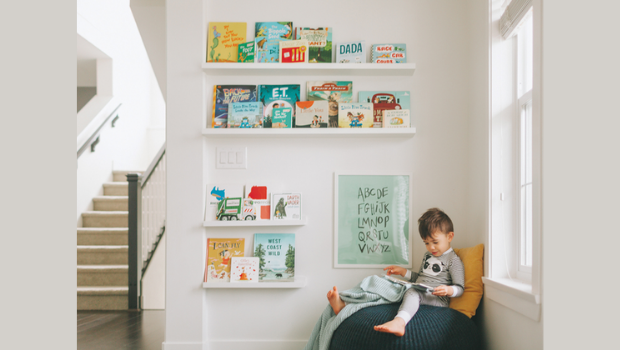Zen Zone for Kids: Create the Perfect Calm-Down Corner at Home
Children and teens are sensitive beings, and like adults, they need daily tools to offset the stresses of life. Whether a child is overwhelmed by COVID-19 protocols at school, is on the autism spectrum or is highly sensitive or anxious, creating a special place to decompress can help manage big emotions. “Children, including teens, often don’t recognize the combination of sensory stimuli that is causing anxiety, irritation or exhaustion that can then lead to emotional reactivity in the form of anger, outbursts, silence, crying, inappropriate laughing or teasing,” says occupational therapist April Christopherson, owner of Exploration Kids Therapy, in Gunnison, Colorado.
Peace, Not Punishment
A calm space can be an inviting corner, a designated room or a place outdoors. “Sensory processing is a blanket term for how our brains and bodies integrate and use the sensory information/input around us. This is mostly environmental,” says Christopherson. Triggers may include uncomfortable room temperature, noise, inadequate or intrusive lighting, even scratchy clothing. Unlike time-out spaces that prompt kids to process actions and think about behavior, calm-down spaces can soothe a nervous system in overdrive and quell uncontrollable meltdowns.
“It’s common for kids with sensory processing needs to be misunderstood and labeled as overly sensitive or explosive. Creating a space that meets your child’s sensory needs gives them a safe space to retreat to when they’re feeling overwhelmed,” says Alisha Grogan, a Pittsburgh occupational therapist and creator of Your Kids Table for picky eaters.
Calming Nerves, Engaging the Senses
Kids’ tranquil areas can be simple or elaborate, but part of the magic formula is including objects that soothe the senses. “The calm space can contain items that allow time for stress hormones to decrease,” says certified autism specialist Cara Koscinski, of Jacksonville, Florida, founder of The Pocket Occupational Therapist, an online source for parents, therapists and students. She recommends including sensory allies such as bean bags, therapy putty or dough, slow or classical music, a white noise machine, books, emotion identification cards and fidget toys (squishy or gel-filled balls, tangle toys or a Rubik’s Cube). A weighted blanket or stuffed animal, especially for younger children, is also a good option. “Time to refocus and allow deep breathing can make a world of difference,” says Koscinski, recommending cards with cues or instructions for deep breathing.
Sarah Norris, founder of the coaching website The Sensory Coach, with offices in Denver, Atlanta and Chicago, believes we can all benefit from sensory strategies. “Using sensation is a powerful way to change how you feel without much thought or expression,” she says. “Sensory objects can often be used in more than one way, which allows you to discover how to help yourself feel better in a fun, nonjudgmental way.” She recommends including scented items with calming essential oils and drawing pads, as well as age-appropriate and coloring books.
Grogan’s sensory picks are stress balls, kinetic sand, noise-cancelling headphones, scented teddy bears and chewy necklaces for a child to bite on. “Families may want to have a variety of sensory tools and toys available so a child can choose what’s helpful for them,” she says. Ambient lighting, including lava lamps and year-round holiday lights, can set the mood of any sensory space.
Tranquil Possibilities
Setting up stress-free zones at home doesn’t have to be a one-size-fits all approach. Norris favors going outside the box. “If you have the space to set up a reading nook or a semi-permanent pillow fort, your kids will love you for it. Don’t overlook the possibility of using outdoor spaces as places to promote calm. Being in nature can be very regulating, especially if there is a comfy seat or fun swing to enjoy.” If making an area at home doesn’t work for some families, Norris suggests highly effective portable kits that can come along in the car or to doctor’s appointments.
Christopherson encourages creative options like a comfortable beanbag at the bottom of a closet, a rocking chair with a heavy blanket or an outside fort or tree house. For multi-sibling homes, Grogan recommends a pop-up tent in a corner or in smaller spaces or a blanket thrown over a table for an instant fort.
Whatever the setup or individual needs, calm spaces encourage kids to find their center and claim their space in a chaotic world. “All kids should be given what they need for success,” underscores Koscinski.
Marlaina Donato is an author and a recording artist.




























